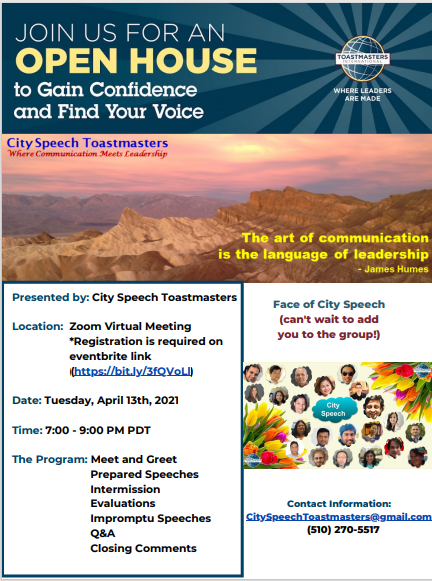As we end the Toastmasters year today, it is hard not to reflect on the successes we have enjoyed this past year.
Let me count the ways we have done something good:
- We achieved President’s Distinguished status.
- We posted 15 level completions just in the span of two months: April & May! We won the 1st prize for that accomplishment. Throughout the year, we posted 26 level completions.
- We endured the 2021 Club Newsletter Contest that our district organized and secured 1st place in the contest. This lasted six months starting November 2020 and ended in April.
- In the year devastated by COVID-19 the world over, while many of the other clubs saw their membership numbers drop, we have seen phenomenal growth in our membership count. We went from the starting count of 23 to the final count of 32, a net addition of 9. This is the result of adding 21 members that offset our share of attrition.
- In the first year that District Bucks have been put in place, we earned a whopping $480 through awards and incentives and were one of the top earning clubs in the district. A glimpse at what earned us this success:
5/9/21: 1st Place Newsletter Contest
5/2/21: Gem Goal Award
4/13/21: Open House
4/27/21: Open House
3/2/2021: First 20 Clubs with 8 Member Renewal
2/11/21: 7 of 7 Officers Trained
11/10/20: Open House
9/22/20: Open House
8/10/20: First 40 Clubs with 8 Member Renewal
9/7/20: 7 of 7 Officers Trained
8/31/20: Mini Success Plan
- Two of the members, Praveena and Luz, earned their Triple Crowns for completing three Pathways levels that included a Level 5 completion.
- Two of the members, Praveena and Venkat, earned their OATM awards (Outstanding Achievement Toastmaster). This is Venkat’s fourth year of qualifying for this award.
In the history of City Speech, it seems that the stars and planets aligned to enable us to score this level of success this year. But the real story is the members coming alive in making the club vibrant and being motivated to accomplish much.
Take our President’s Distinguished status, for example. Members who contributed to making it happen are Pravesh Kumar, Abhishek Chaturvedi, Tony Zhang, Shue Xiong, Mary Perez, Darshana Suresh, Praveena Raman, Srinivas Koneru, and Amit Kamble. Out of these, Darshana contributed to DCP points 1 and 2. Everyone else contributed to just one of the points that got us there. This is a fabulous demonstration of all of us pulling together.
We have had an interesting history with our distinguished status. Chartered on June 30, 2014, exactly seven years ago today, we have had seven opportunities at this metric. Note that the criteria that determine this status use both DCP points and membership level. The following table captures our history where we have never been just Distinguished. Either we had no distinction or we have been Select or President’s Distinguished.
| Year | DCP Points | Members | Status |
| 2014-2015 | 1 | 9 | |
| 2015-2016 | 8 | 21 | Select Distinguished |
| 2016-2017 | 9 | 23 | President’s Distinguished |
| 2017-2018 | 10 | 17 | |
| 2018-2019 | 10 | 20 | President’s Distinguished |
| 2019-2020 | 10 | 23 | President’s Distinguished |
| 2020-2021 | 9 | 32 | President’s Distinguished |
As you can see, 2017-2018 was a heartbreaker because, in spite of maxing out with 10 out of 10 DCP points, we were left holding the bag with no distinction due to our closing membership count not making it to 20 on June 30, 2018. We are sensitive to that aspect of DCP and have tried to maintain the required membership count.
Each year has its own incentive mix. Many of the incentives may continue. Some may be lost, and new ones may appear. It is our goal to work with whatever is available and maximize our accomplishments and, in the end, our enjoyment.
The challenge is on for the upcoming year. We’ll give it our best shot!







